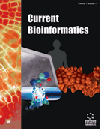
Full text loading...
We use cookies to track usage and preferences.I Understand

Celiac Disease (CD) is a common autoimmune disorder caused by the activation of CD4+ T cells that specifically target gluten and CD8+ T cells, further causing cell death inside the epithelial layer despite no available established biomarkers of CD diagnosis.
This work aimed to compare scRNA-seq and transcriptome data to find novel gene biomarkers linked to T cells that might potentially be utilized for the diagnosis and assessment of CD.
Collecting the scRNA and RNAseq datasets from the NCBI database, the Seurat package of R studio, and the statistical analysis tool GREIN server were employed to identify Differentially Expressed Genes (DEGs). Then, DAVID, FunRich, STRING, and NetworkAnalyst tools were utilized to explore significant pathways, key hub proteins, and gene regulators.
After integrating genes and conducting a comparative analysis, a total of 115 genes were identified as DEGs. Exosomes, MHC class II receptor activity, immune response, interferon gamma signaling, and bystander B cell activation within the immune system pathways were the significant Gene Ontology (GO) and metabolic pathways identified. Besides, eleven topological algorithms discovered two hub proteins, namely HLA-DRA and HLA-DRB1, from the PPI network. Through the analysis of the regulatory network, we have identified four crucial Transcription Factors (TFs), including YY1, FOXC1, GATA2, and USF2, and seven significant miRNAs (hsa-mir-129-2-3p, and hsa-mir-155-5p, etc.) in transcriptionally and post-transcriptionally regulated. Validation of hub proteins and transcription factors using Receiver Operating Characteristic (ROC) analysis indicates the acceptable value of the Area Under the Curve (AUC).
This study utilized single-cell RNA sequencing and transcriptomics data analysis to define unique protein biomarkers associated with T cells throughout the progression of CD. Furthermore, wet lab studies will be needed to validate the potential hub proteins, TFs, and miRNAs as clinical biomarkers.

Article metrics loading...

Full text loading...
References


Data & Media loading...